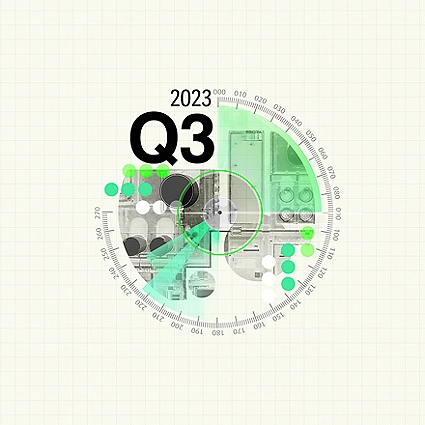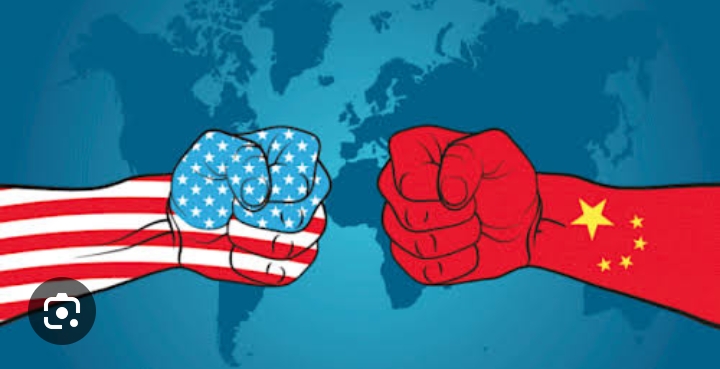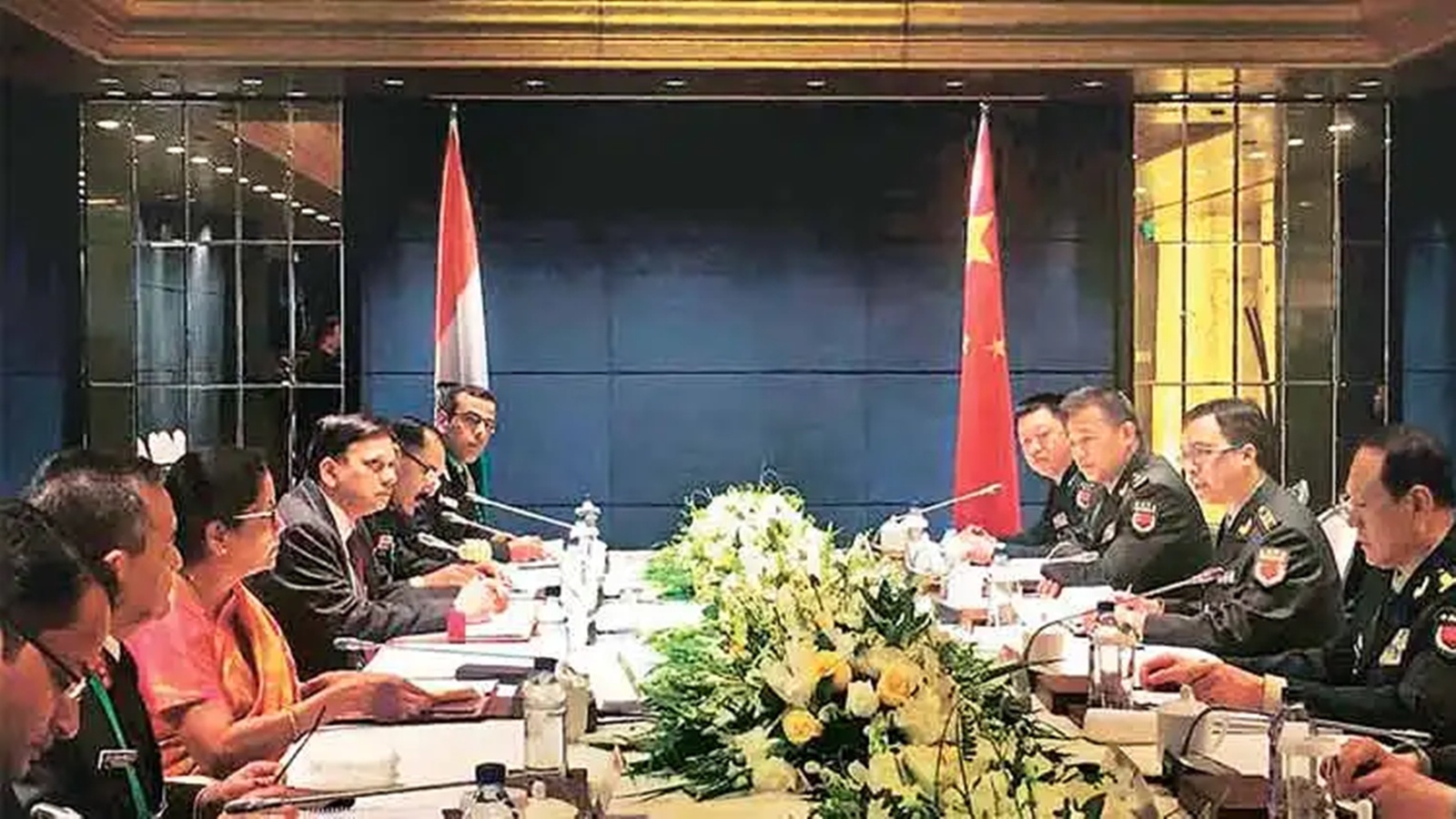Note4Students
From UPSC perspective, the following things are important :
Prelims level: Asola Bhatti WLS
Mains level: NA

Central Idea
- The Delhi High Court is considering staying a forest department ‘Walkathon’ event in the Asola Bhatti Wildlife Sanctuary.
About Asola Bhatti WLS
- Location: Situated in the southern part of Delhi and extends into Faridabad and Gurugram districts of Haryana.
- Spread: Occupies 32.71 sq. km on the Aravalli hill range’s Southern Delhi Ridge, bordering Delhi and Haryana.
- Connectivity: Forms a part of Rajasthan’s Sariska Tiger Reserve to the Delhi Ridge.
- Vegetation: Classified under Northern Tropical Thorn Forests.
- Plant Adaptations: Features plants with xerophytic characteristics like thorns, wax-coated and succulent leaves.
- Flora: Characterized by the presence of the exotic Prosopis juliflora and the native Diospyros montana.
- Wildlife Diversity: Home to species such as Golden Jackals, Striped-Hyenas, Indian Crested-Porcupines, Civets, Jungle Cats, various snakes, Monitor Lizards, and Mongoose.
Get an IAS/IPS ranker as your 1: 1 personal mentor for UPSC 2024
Attend Now
Note4Students
From UPSC perspective, the following things are important :
Prelims level: ALTÉRRA Fund
Mains level: NA
Central Idea
- The United Arab Emirates, as the host of COP-28, has committed US$30 billion to establish ALTÉRRA, a climate investment fund.
What is ALTÉRRA Fund?
- Fund Objective: ALTÉRRA aims to mobilize US$250 billion globally by 2030, aspiring to be the largest fund dedicated to climate investments.
- Focus: The fund is designed to transform emerging markets and developing economies through climate investments.
- Clean Energy in India: An initial portion of the fund is allocated for developing over 6.0 GW of new clean energy capacity in India, including 1,200 MW of wind and solar projects expected to be operational by 2025.
- Financial Requirements: Emerging markets and developing economies reportedly need US$2.4 trillion annually by 2030 to address climate change.
- Key Verticals: ALTÉRRA will focus on four main areas: Energy Transition, Industrial Decarbonisation, Sustainable Living, and Climate Technologies.
Leadership and Management
- Chair: COP-28 President, Sultan Ahmed Al Jaber, will chair the ALTÉRRA fund.
- Management Entity: Lunate, an independent global investment manager, has established ALTÉRRA.
- Domicile: The fund is domiciled in the Abu Dhabi Global Market.
Mission and Impact
- Transformational Solution: ALTÉRRA is positioned as a transformative solution for attracting private capital into climate-focused investments.
- Multiplier Effect: The fund’s scale and structure are expected to create a significant impact in climate investment.
- Reflection of COP Presidency’s Action Agenda: The launch of ALTÉRRA aligns with the UAE’s COP Presidency Action Agenda and efforts to make climate finance more available, accessible, and affordable.
Get an IAS/IPS ranker as your 1: 1 personal mentor for UPSC 2024
Attend Now
Note4Students
From UPSC perspective, the following things are important :
Prelims level: Green Credits Scheme
Mains level: NA
Central Idea
- India introduced the Green Credits Scheme at COP28 in Dubai. PM Modi emphasized that this program goes beyond the commercial nature of carbon credits, offering a broader environmental impact.
What is Green Credits Programme?
- Objective: The initiative aims to generate Green Credits through plantation on degraded wasteland.
- Inception: Launched in October by the Environment Ministry, it is designed to incentivize various environment-positive actions.
- Action Areas: Includes tree plantation, water management, sustainable agriculture, waste management, air pollution reduction, mangrove conservation, ecomark label development, and sustainable building.
- Scope beyond Carbon: Unlike existing carbon credit systems, this program extends incentives to actions beyond carbon emission reductions, such as water conservation and soil improvement.
Distinctive Features
- Market-Based Approach: The program aims to create a market for trading green credits, similar to carbon credits, where companies can earn credits for environmental actions and trade them.
- Development Stage: Methodologies and standards for measuring and verifying such actions are under development, and the market for these credits is yet to be established.
- Initial Buyers: It is anticipated that private companies might purchase these green credits to fulfill their Corporate Social Responsibility (CSR) obligations.
- Wider Beneficiaries: Unlike carbon markets, which primarily target industries and corporations, the green credit program can benefit individuals and communities as well.
Get an IAS/IPS ranker as your 1: 1 personal mentor for UPSC 2024
Attend Now
Note4Students
From UPSC perspective, the following things are important :
Prelims level: Pressmud
Mains level: NA

Central Idea
- Leading Sugar Producer: Since 2021-22, India has surpassed Brazil to become the world’s leading sugar producer.
- Second-Largest Exporter: India also holds the position of the second-largest sugar exporter globally.
- Ethanol Biofuel Sector Growth: The expansion of this sector has bolstered the sugar industry and improved the financial health of sugar mills.
Pressmud: A Valuable Byproduct
- Pressmud, also known as filter cake or press cake, is an agricultural waste product from sugar production.
- It is obtained during the repeated filtration of cane juice before sugar extraction.
- Approximately 3-4 percent of press mud is produced per tonne of crushed cane.
- Traditionally, pressmud is recycled as manure through composting and supplied to local farmers.
- Recognized as a resource for green energy, pressmud can be used to produce biogas through anaerobic digestion, leading to compressed biogas (CBG) creation.
- It is beneficial for crops and horticulture due to its richness in micronutrients.
Challenges with Pressmud
- Storage Issues: Pressmud undergoes gradual decomposition, complicating long-term storage and increasing production costs.
- Price Increase: The recognition of its potential has led to a substantial rise in pressmud prices.
Pressmud as CBG Feedstock: Advantages and Challenges
- Supply Chain Simplification: Using pressmud eliminates complexities associated with agricultural residue supply chains.
- Quality and Pre-treatment: Unlike municipal solid waste, pressmud’s quality is consistent, and it lacks lignin, reducing pre-treatment costs.
- Conversion Efficiency: Pressmud is more efficient and economical as a feedstock for CBG production compared to cattle dung and agricultural residue.
- Economic and Competitive Factors: The increasing price of pressmud and competition for its use in fertilizers and bio-composting pose challenges.
Regional Production and Sugar Mills in India
- Primary Sugarcane States: Uttar Pradesh and Maharashtra contribute significantly to India’s sugarcane cultivation.
- Operational Sugar Mills: As of 2022-23, India had 531 operational sugar mills.
- Sugar and Pressmud Production: The total sugar production was 32.74 million tonnes, with approximately 11.4 million tonnes of pressmud.
Potential and Future Steps
- CBG Potential: The available pressmud can generate significant quantities of CBG, valued at substantial economic returns.
- Required Interventions: To maximize this potential, states need to implement bioenergy policies, control pressmud prices, and establish long-term agreements with sugar mills.
- Research and Training: Developing storage technologies for pressmud and conducting training for CBG plant operators are essential.
Back2Basics: Sugarcane By-products
|
Description |
Uses |
| Bagasse |
Fibrous residue left after sugarcane crushing. |
– Biofuel for energy production
– Raw material for paper, board, building materials |
| Molasses |
Thick, dark syrup produced during sugar refining. |
– Alcohol production (e.g., rum)
– Sweetener in animal feed
– Base for fermentation products
– Ingredient in food products |
| Vinasse |
(Distillery Waste) Liquid waste from ethanol production using molasses. |
– Liquid fertilizer
– Biogas production |
| Carbon Dioxide |
Gas produced during fermentation in sugar manufacturing. |
– Carbonation in beverages
– Enhancing plant growth in greenhouses |
| Fly Ash |
Ash produced from burning bagasse. |
– Material in cement and concrete
– Soil amendment in agriculture |
| Heat Energy |
Thermal energy generated from manufacturing processes. |
– Cogeneration for electricity and heating |
Get an IAS/IPS ranker as your 1: 1 personal mentor for UPSC 2024
Attend Now

Central Idea:
The Indian state faces a paradox of being too burdensome in bureaucracy yet too small in terms of personnel. The focus should shift from the size of the state to addressing issues of perverse incentives, skill gaps, and institutional constraints for effective governance.
Key Highlights:
- Bureaucratic Challenges: Setting up businesses or homes in urban areas in India involves navigating a complex web of licenses, permits, and clearances, reflecting the bureaucratic thicket that hinders efficiency.
- State Size Discrepancy: While India has a relatively small number of civil servants per capita and a lower public sector share in employment, it struggles with challenges in providing essential services and infrastructure.
- Perverse Incentives: The root cause of governance inefficiency lies in perverse incentives within public institutions, hindering policymakers and officials from making and implementing effective policies.
- Need for Delegation: Lessons from countries like Australia and Malaysia suggest that separating policymaking and implementation responsibilities expedites execution and encourages innovations, improving program outcomes.
- Technocratic Gap: The lack of technocratic skills at the policymaking level results in substantial outsourcing to consultancy firms, revealing a gap that needs to be addressed for effective governance.
Key Challenges:
- Technocratic Skill Deficiency: The Indian bureaucratic system lacks technocratic skills, leading to significant outsourcing of crucial tasks to consultancy firms, highlighting a need for internal capability building.
- Policy Failures: Both proponents and critics of a larger state miss the fundamental issue of perverse incentives and skill gaps, contributing to policy failures across various sectors.
Key Phrases:
- People-Thin, Process-Thick State: Describes the Indian state as lacking in personnel but burdened with complex processes, emphasizing the need for a shift in focus from size to efficiency.
- Perverse Incentives: Highlights the negative motivations within public institutions that hinder sound policymaking and implementation.
Key Quotes for good marks:
- “The main problem, however, is the perverse incentives created by public institutions and the skill gap among officials.”
- “Both sides to the debate are missing something fundamental.”
Anecdotes:
- National Highways Authority of India: The example of the NHAI, where policymaking and execution are separated, showcases the effectiveness of delegation in reducing delays and cost overruns.
Critical Analysis:
- Audits and Oversight: The focus on compliance over policy objectives due to narrowly scoped audits by oversight agencies hampers effective decision-making, causing delays and disputes.
Way Forward:
Implementing institutional reforms, such as separating policymaking and implementation, enhancing technocratic skills, and sensitizing oversight agencies to contextual policy decisions, can improve state capability.
Get an IAS/IPS ranker as your 1: 1 personal mentor for UPSC 2024
Attend Now
Note4Students
From UPSC perspective, the following things are important :
Prelims level: na
Mains level: India's nimble and forthright diplomacy
Get an IAS/IPS ranker as your 1: 1 personal mentor for UPSC 2024
Attend Now
Note4Students
From UPSC perspective, the following things are important :
Prelims level: PLI Scheme
Mains level: sustained economic recovery

Central idea
The Indian growth story remains a beacon of hope. The economy is unlikely to slow down in line with other major economies of the world as the government continues to undertake reforms.
Key Highlights:
- Economic Growth: The Indian economy expands by 7.6% in Q2, challenging doubts on post-pandemic macroeconomic resilience.
- Manufacturing Surge: The manufacturing sector grows robustly at 13.9%, indicating positive outcomes from policy initiatives and credit stabilization.
- Corporate Health: Corporate books show impressive bottom-line growth, reflecting broad-based economic recovery.
- Capex Intentions: Historic capex intentions with new investment announcements reaching Rs 37 lakh crore in 2022-23, signifying increased private sector participation.
- Agricultural Transformation: Agriculture grows by 1.2%, with a shift towards allied activities reducing dependence on traditional farm income.
- Banking Support: Banks increasingly finance the entire agri value chain, with agri loans growing by 15.4% in 2022-23.
- Services Sector Moderation: Services sector growth moderates to 5.8%, influenced by low growth in trade, hotels, transport, and communication.
- Consumption Patterns: Private consumption decelerates to 3.1%, possibly impacted by higher inflation, expected to pick up in the third quarter.
- Government Investments: Government consumption and investments register healthy growth, with gross fixed capital formation increasing by 11%.
Key Challenges:
- Global Growth Risk: Risk of softer global growth, especially in the US and Euro region, may impact India’s exports and economic momentum.
- Consumer Sentiment Woes: Consumer sentiments in major economies worsen amid growing uncertainty, potentially affecting global trade.
Key Terms and Phrases:
- Macro-economic Resilience: India’s ability to withstand and recover from economic shocks.
- PLI Scheme: Production-Linked Incentive scheme aimed at boosting manufacturing in specific sectors.
- Corporate Balance Sheets: Financial health and performance of businesses.
- Capex Intentions: Plans and commitments for capital expenditures.
- Allied Activities in Agriculture: Diversification into areas like dairy and fisheries within the agriculture sector.
- Gross Fixed Capital Formation: Investment in fixed assets contributing to economic growth.
- Consumer Sentiments: Public attitudes and feelings regarding economic conditions and spending.
- Global Trade Headwinds: Challenges and obstacles affecting international trade.
Key Quotes:
- “The Indian growth story remains a beacon of hope.”
- “The economy is unlikely to slow down in line with other major economies of the world.”
Key Statements:
- Manufacturing sector growth indicates an uptick triggered by government expenditure, policy initiatives, and credit stabilization.
- Agriculture’s increased focus on allied activities reduces dependence on traditional farm income.
- Historic capex intentions and private sector participation signal a strong economic recovery.
Key Examples and References:
- New investment announcements hitting a high of Rs 37 lakh crore in 2022-23, showcasing increased private sector participation.
- Agriculture loans by banks increase by 15.4% in 2022-23, indicating growing support for the agri value chain.
Key Facts and Data:
- Indian economy grows by 7.6% in Q2, marking two consecutive quarters of 7% plus growth.
- Manufacturing sector grows at a robust 13.9%, reaching a nine-quarter high.
- New investment announcements hit Rs 37 lakh crore in 2022-23, compared to Rs 20 lakh crore in 2021-22.
- Agriculture grows by 1.2% in Q2, with allied activities contributing significantly.
Critical Analysis:
- The robust economic growth raises questions about the accuracy of forecasts doubting India’s resilience.
- The manufacturing sector’s strong performance indicates positive outcomes from government initiatives and policies.
- Private sector participation in capex reflects confidence in the economic recovery.
- Increased focus on allied activities in agriculture showcases a shift in the sector’s dynamics.
- The potential risk of softer global growth highlights external factors influencing India’s economic trajectory.
Way Forward:
- Continued government reforms and support for economic growth.
- Monitoring and addressing potential risks from softer global growth.
- Sustaining the positive momentum in manufacturing and capex through policy measures.
- Emphasizing the role of allied activities in agriculture for a diversified income base.
- Nurturing consumer sentiments and encouraging private consumption for sustained economic recovery.
Get an IAS/IPS ranker as your 1: 1 personal mentor for UPSC 2024
Attend Now
Note4Students
From UPSC perspective, the following things are important :
Prelims level: na
Mains level: current world order's uneven power distribution

Central idea
The world order is shifting, with the U.S. leading but China rising fast. India needs to navigate complex relations, address internal challenges, and focus on economic and military growth for a strong role globally. Amid global conflicts, balancing alliances is crucial for India’s position in the evolving geopolitical landscape.
Key Highlights:
- Global Order Dynamics: Shifting landscape with China’s rise, Russian challenges, and the emergence of middle powers like India.
- Asymmetric Bipolarity: Viewing the world order as asymmetric bipolarity, where the U.S. remains pre-eminent but China rapidly advances.
- China’s Impact: Unprecedented economic and military growth redefines international power dynamics.
Key Challenges:
- Russia-China Nexus: The war in Ukraine strengthens Russia-China ties, posing strategic challenges for India.
- Global Security Complexities: Conflicts in Eastern Europe and West Asia contribute to a multifaceted global security landscape.
- Diplomatic Maneuvering: Navigating complex relations with the U.S., China, and Russia amid evolving global power dynamics.
Key Terms and Phrases:
- Asymmetric Bipolarity: Understanding the dynamics of uneven power distribution in the current world order.
- People’s Power: The 21st century characterized by unprecedented connectivity, interactions, and global integration.
- Military-Industrial Complex: The influence of industries producing destructive weapons on global violence.
- Two-Front Dilemma: China’s strategic challenge, facing pressures in the Western Pacific and the Line of Actual Control.
| Key Quotes and Anecdotes for extra marks:
“The present world order is in a state of flux, with asymmetric bipolarity as a defining feature.”
“China’s GDP growth from $300 billion in 1990 to $19.3 trillion today is a historic shift in global power dynamics.”
“India must acknowledge China as a long-term competitor, addressing power asymmetry through comprehensive national growth.”
“Global violence is fueled by the military-industrial complex spreading instruments of death and destruction.” |
Key Statements and Examples:
- Russia’s Pivot: Economic sanctions and the Ukraine conflict drive Russia towards closer ties with China.
- India’s Diplomatic Complexities: Balancing trade ties with China and managing strategic challenges with the U.S. and Russia.
- China’s Economic Surge: Unprecedented GDP growth influencing global power dynamics and necessitating India’s strategic response.
Key Facts and Data:
- China’s GDP Growth: A remarkable shift from $300 billion to $19.3 trillion in the last four decades.
- India-China Trade: Standing at $138 billion, showcasing the intricate nature of bilateral relations.
- War in Ukraine: Ongoing for the past 20 months, contributing to evolving geopolitical dynamics.
Critical Analysis:
- Recognition of Asymmetric Bipolarity: Acknowledging and adapting to the current world order’s uneven power distribution.
- Comprehensive National Growth: Emphasizing India’s need to strengthen its comprehensive national power amid power asymmetry with China.
- Global Relations Management: Recognizing and addressing challenges in India’s diplomatic strategy amidst evolving global dynamics.
Way Forward:
- Internal Strengthening: Addressing internal fault lines, fostering societal cohesiveness, and focusing on comprehensive national growth.
- Strategic External Balancing: Balancing relations with the U.S. to maintain China’s two-front dilemma and preserving India’s strategic autonomy.
- Advocacy for Global Disarmament: Addressing the root issue of the military-industrial complex, promoting global disarmament for a more peaceful world.
Get an IAS/IPS ranker as your 1: 1 personal mentor for UPSC 2024
Attend Now






